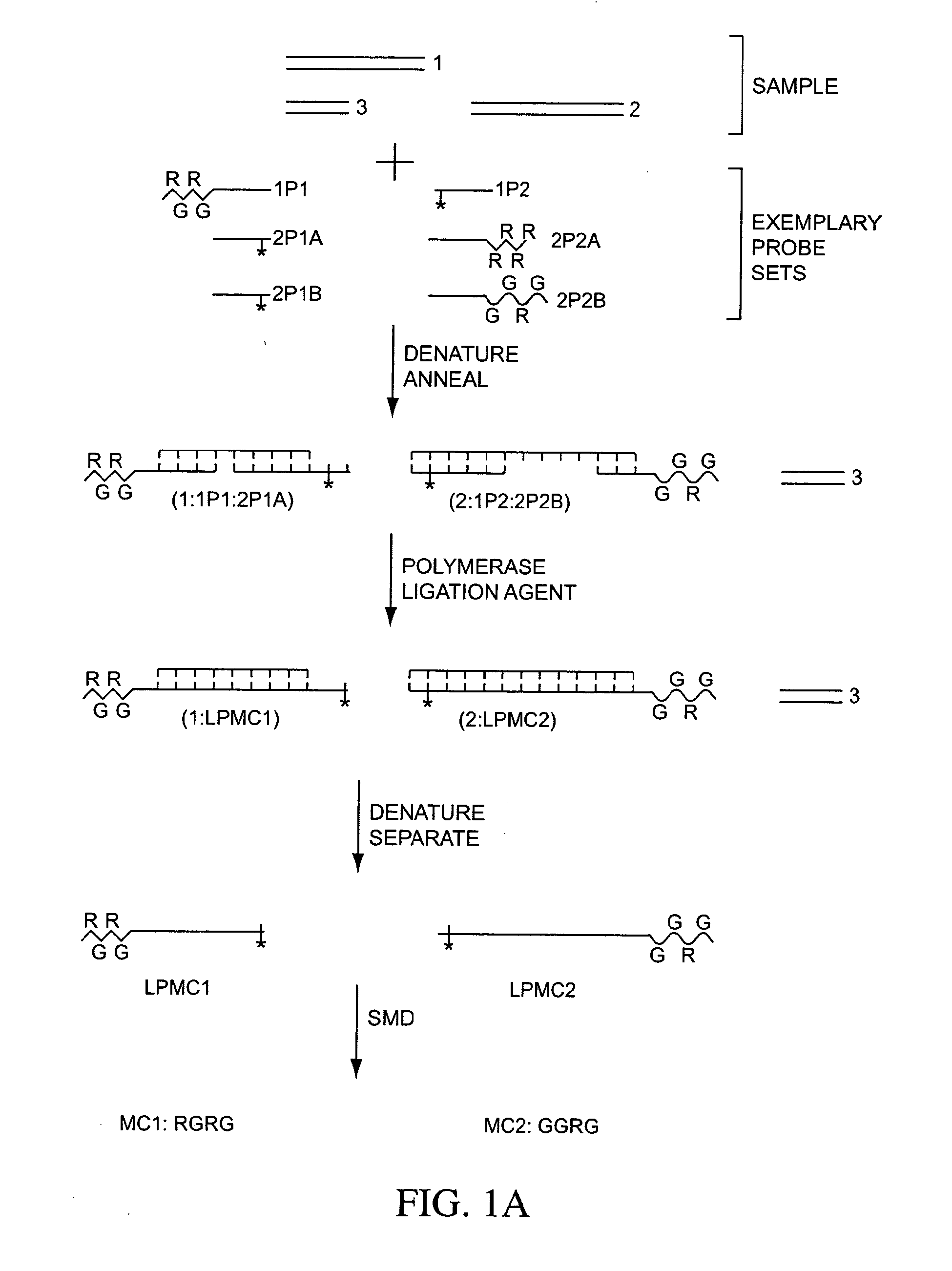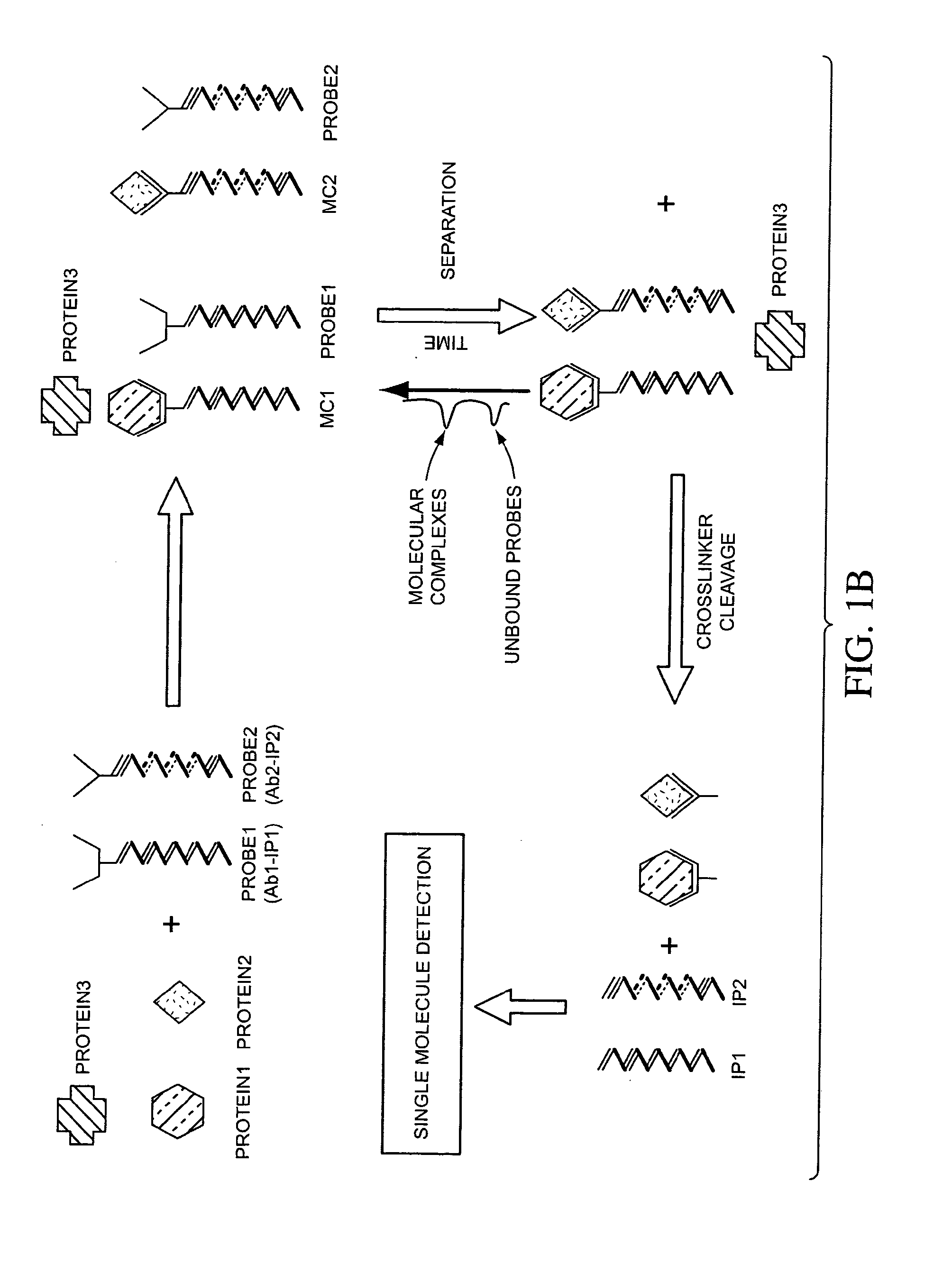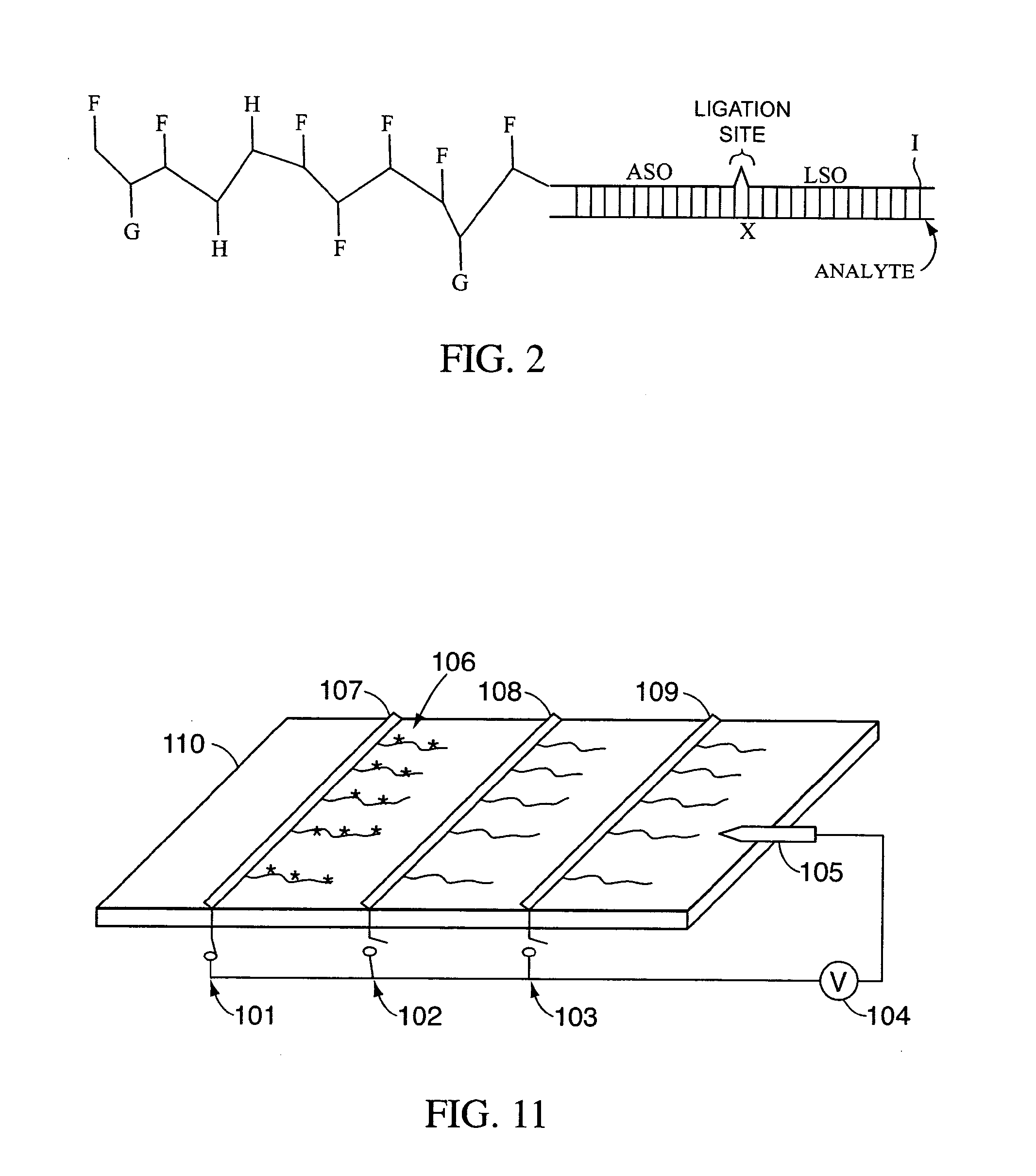Compositions, methods, and kits for fabricating coded molecular tags
- Summary
- Abstract
- Description
- Claims
- Application Information
AI Technical Summary
Benefits of technology
Problems solved by technology
Method used
Image
Examples
example 1
Coded Molecular Tag Fabrication
Labeling Templates Using PNA Openers Comprising Reporter Groups
[0162]Six different PNA openers comprising at least one fluorescent reporter group species (“FRG” in this example) are synthesized on an AB433A Peptide Synthesizer (Applied Biosystems, Foster City, Calif.) essentially according to the manufacturer's instructions and known methods. Each of the six PNA openers comprise the sequence: FRG-OO-Lys-Lys-[core sequence 1]-OOO-[core sequence 2]-Lys-Lys, where O refers to 8-amino-3,6-dioxaoctanoicacid linker, Lys refers to lysine, J refers to N-[2-aminoethyl-5-ylacetyl]isocytosine glycine, core sequence 1 refers to the particular single-stranded DNA sequence that is complementary to a specific sequence on the full-length bacteriophage lambda genome (“λ-DNA” in this example), and core sequence 2 depends on the sequence of core sequence 1, as shown. Table 1 shows the number of the illustrative PNA openers (“#”), the location of target sequence in λ-DNA ...
example 2
Coded Molecular Tag Fabrication
Restriction-Ligation Procedure
[0166]Coded molecular tags were generated by recombinant techniques using templates comprising genomic DNA from the bacteriophage lambda (λ-DNA) and two intercalating fluorescent dyes, as shown in FIG. 7A.
[0167]One microgram λ-DNA was combined with 10 units of the restriction enzyme NheI, bovine serum albumin (BSA) and 1×NEBuffer 2 in a reaction volume of 20 μL and incubated at 37° C. for one hour (NheI Restriction Endonuclease Kit, New England BioLabs, Beverly, Mass.). The restriction enzyme digest was loaded onto a 0.7% agarose gel in 1×TBE and electrophoresed at 1.5-2 volts / cm for 8 hours. Full-length (undigested) λ-DNA and a DNA ladder were electrophoresed in parallel as markers. The gel was then stained with the intercalating dye SybrGreen (Molecular Probes, Eugene, Oreg.) and the stained material visualized under UV illumination. Full-length λ-DNA is a double stranded molecule approximately 48,500 base pairs (48.5 ki...
example 3
Coded Molecular Tag Fabrication
[0169]Adenovirus-2 DNA (35.9 kb) is cleaved with Pac I (New England BioLabs #R0547) according to the manufacturer's instructions and the digestion products are gel purified using conventional methods. A 28.6 kb fragment and a 7.3 kb fragment (“frag 1” in this example) are obtained. The 28.6 kb fragment is cleaved with AsiS I (New England BioLabs #R0360) according to the manufacturer's instructions and the digestion products are gel purified using conventional methods. A 21.4 kb fragment and a 7.2 kb fragment (“frag 2” in this example) are obtained. The 21.4 kb fragment is cleaved with Pme I (New England Biolabs #R0560) according to the manufacturer's instructions and the digestion products are gel purified using conventional methods. A 13.2 kb fragment and an 8.2 kb fragment (“frag 3” in this example) are obtained. The 13.2 kb fragment is cleaved with Sbf I (New England Biolabs #V0101) according to the manufacturer's instructions and the digestion prod...
PUM
| Property | Measurement | Unit |
|---|---|---|
| Fluorescence | aaaaa | aaaaa |
Abstract
Description
Claims
Application Information
 Login to View More
Login to View More - R&D
- Intellectual Property
- Life Sciences
- Materials
- Tech Scout
- Unparalleled Data Quality
- Higher Quality Content
- 60% Fewer Hallucinations
Browse by: Latest US Patents, China's latest patents, Technical Efficacy Thesaurus, Application Domain, Technology Topic, Popular Technical Reports.
© 2025 PatSnap. All rights reserved.Legal|Privacy policy|Modern Slavery Act Transparency Statement|Sitemap|About US| Contact US: help@patsnap.com



